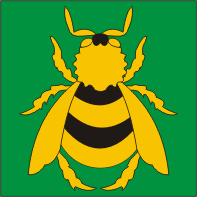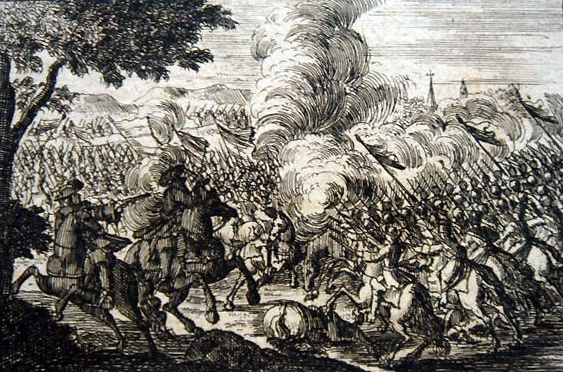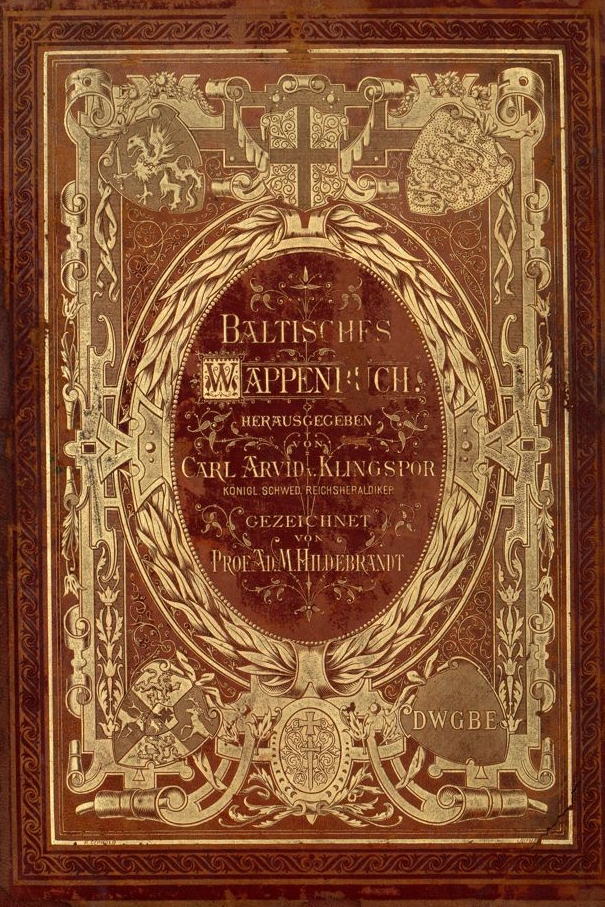|
Hummuli
Hummuli (german: Hummelshof) is a small borough ( et, alevik) in Valga County, in southern Estonia. It was the administrative centre of Hummuli Parish. Hummuli has a population of 379 (as of 1 January 2010). In 1702 the Battle of Hummelshof, part of the Great Northern War, took place near Hummuli. Hummuli manor Hummuli manor has a history that goes back to at least 1470. The present-day building however dates from the 1860s, when the manor belonged to the local aristocrats von Samson-Himmelstjerna, who were the owners of the estate right up until 1914. Today the manor houses a school, and although a few interior details remain, the interior layout of the neo-Gothic building has changed drastically. In 1919 a battle of the Estonian War of Independence The Estonian War of Independence ( et, Vabadussõda, literally "Freedom War"), also known as the Estonian Liberation War, was a defensive campaign of the Estonian Army and its allies, most notably the United Kingdom, agains ... [...More Info...] [...Related Items...] OR: [Wikipedia] [Google] [Baidu] |
Hummuli Valla Lipp
Hummuli (german: Hummelshof) is a small borough ( et, alevik) in Valga County, in southern Estonia. It was the administrative centre of Hummuli Parish. Hummuli has a population of 379 (as of 1 January 2010). In 1702 the Battle of Hummelshof, part of the Great Northern War, took place near Hummuli. Hummuli manor Hummuli manor has a history that goes back to at least 1470. The present-day building however dates from the 1860s, when the manor belonged to the local aristocrats von Samson-Himmelstjerna, who were the owners of the estate right up until 1914. Today the manor houses a school, and although a few interior details remain, the interior layout of the neo-Gothic building has changed drastically. In 1919 a battle of the Estonian War of Independence The Estonian War of Independence ( et, Vabadussõda, literally "Freedom War"), also known as the Estonian Liberation War, was a defensive campaign of the Estonian Army and its allies, most notably the United Kingdom, against ... [...More Info...] [...Related Items...] OR: [Wikipedia] [Google] [Baidu] |
Valgamaa Lipp
Valga County ( et, Valga maakond or ''Valgamaa'') is a first-level administrative unit and one of 15 counties of Estonia. It comprises the former area of Valga District. The present-day county was created on 1 January 1990. The capital and largest town of Valga County is Valga, followed by Tõrva and Otepää. It is situated in the southern part of the country and borders Põlva and Võru County to the east, Latvia to the south and west, and Viljandi and Tartu County to the north. 29,944 people live in Valga County (as of 1 January 2015). General Valga County is located in the southern part of Estonia. By the economic-geographical and regional-political distribution it belongs to the area of South-East Estonia (together with Põlva and Võru County). By historical ties and landscape the county belongs to the region of South Estonia (together with Põlva, Võru, Viljandi, Tartu and Jõgeva Counties). With a population of 30,176 people (as of 1 January 2014), the total area of ... [...More Info...] [...Related Items...] OR: [Wikipedia] [Google] [Baidu] |
Valga County
Valga County ( et, Valga maakond or ''Valgamaa'') is a first-level administrative unit and one of 15 counties of Estonia. It comprises the former area of Valga District. The present-day county was created on 1 January 1990. The capital and largest town of Valga County is Valga, followed by Tõrva and Otepää. It is situated in the southern part of the country and borders Põlva and Võru County to the east, Latvia to the south and west, and Viljandi and Tartu County to the north. 29,944 people live in Valga County (as of 1 January 2015). General Valga County is located in the southern part of Estonia. By the economic-geographical and regional-political distribution it belongs to the area of South-East Estonia (together with Põlva and Võru County). By historical ties and landscape the county belongs to the region of South Estonia (together with Põlva, Võru, Viljandi, Tartu and Jõgeva Counties). With a population of 30,176 people (as of 1 January 2014), the total area ... [...More Info...] [...Related Items...] OR: [Wikipedia] [Google] [Baidu] |
Hummuli Parish
Hummuli Parish was a rural municipality of the Estonian county of Valga. Settlements ;Small borough Hummuli ;Villages Aitsra - Alamõisa - Jeti - Kulli - Piiri - Puide - Ransi - Soe SOE may refer to: Organizations * State-owned enterprise * Special Operations Executive, a British World War II clandestine sabotage and resistance organisation ** Special Operations Executive in the Netherlands, or Englandspiel * Society of Opera ... References {{Valga-geo-stub ... [...More Info...] [...Related Items...] OR: [Wikipedia] [Google] [Baidu] |
Battle Of Hummelshof
Battle of Hummelshof took place on July 19, 1702 ( O.S.) near the small town Hummelshof in Swedish Livonia (present-day Estonia). It was the second significant Russian victory in the Great Northern War in which a Russian army under Boris Sheremetev attacked a much smaller force under Wolmar Anton von Schlippenbach Wolmar Anton von Schlippenbach (1653–1721) was Governor General of Swedish Estonia from 1704 to 1706. Biography Born in Livonia, into the Schlippenbach noble family participated as a captain in the Swedish army Scanian War under Charles XI and ... and defeated it after experiencing similar casualties to the Swedes. This was a final blow to the Swedish force defending Livonia and the defeat left it fully open to Russian attacks. References {{coord, 57.7833, N, 26.0333, E, source:wikidata, display=title Hummelshof 1702 in Europe Hummelshof Military history of Estonia Hummelshof Hummelshof Tõrva Parish 18th century in Estonia ... [...More Info...] [...Related Items...] OR: [Wikipedia] [Google] [Baidu] |
Municipalities Of Estonia
A municipality ( et, omavalitsus, plural ) is the smallest administrative subdivision of Estonia. Each municipality is a unit of self-government with its representative and executive bodies. The municipalities in Estonia cover the entire territory of the country. Municipalities in Estonia are of two types: *Urban municipalities or towns (, singular ) *Rural municipalities or parishes (, singular ). There is no other status distinction between them. Municipalities may contain one or several settlements. All but 5 urban municipalities ( Haapsalu, Narva-Jõesuu, Paide, Pärnu and Tartu) plus 1 rural municipality ( Ruhnu) contain only one settlement. As of 2017, there are no longer any "borough-parishes", i.e. rural municipalities with only one borough-type settlement. Ruhnu Parish contains only one village and is therefore a "village-parish". Some municipalities are divided into districts. The 8 urban districts (, singular ) of Tallinn have limited self-government, while ot ... [...More Info...] [...Related Items...] OR: [Wikipedia] [Google] [Baidu] |
Populated Places In Estonia
Populated places in Estonia Estonia, formally the Republic of Estonia, is a country by the Baltic Sea in Northern Europe. It is bordered to the north by the Gulf of Finland across from Finland, to the west by the sea across from Sweden, to the south by Latvia, and t ... (officially: settlement units), are cities or settlement units of rural municipalities, but only cities have administrative functions. Settlement units are divided into settlements and urban regions et, asum (subdivisions of cities). Officially there are five types of settlement units in Estonia: *town/city ( et, linn) *town without municipal status () *borough () *small borough () *village () See also * Municipalities of Estonia * List of cities and towns in Estonia * Counties of Estonia Notes External links Place Names Board of Estonia [...More Info...] [...Related Items...] OR: [Wikipedia] [Google] [Baidu] |
List Of Sovereign States
The following is a list providing an overview of sovereign states around the world with information on their status and recognition of their sovereignty. The 206 listed states can be divided into three categories based on membership within the United Nations System: 193 member states of the United Nations, UN member states, 2 United Nations General Assembly observers#Present non-member observers, UN General Assembly non-member observer states, and 11 other states. The ''sovereignty dispute'' column indicates states having undisputed sovereignty (188 states, of which there are 187 UN member states and 1 UN General Assembly non-member observer state), states having disputed sovereignty (16 states, of which there are 6 UN member states, 1 UN General Assembly non-member observer state, and 9 de facto states), and states having a political status of the Cook Islands and Niue, special political status (2 states, both in associated state, free association with New Zealand). Compi ... [...More Info...] [...Related Items...] OR: [Wikipedia] [Google] [Baidu] |
Counties Of Estonia
Counties ( et, maakond, plural ') are the first-level administrative subdivisions of Estonia. Estonian territory is composed of 15 counties, including 13 on the mainland and 2 on islands. The government (') of each county is led by a ' (governor) who represents the national government (') at the regional level. Governors are appointed by the national government for a term of five years. Each county is further divided into municipalities of two types: urban municipalities (towns, ') and rural municipalities (parishes, '). The number and name of the counties were not affected. However, their borders were changed by the administrative reform at the municipal elections Sunday 15 October 2017, which brought the number of municipalities down from 213 to 79. List Population figures as of 1 January 2021. The sum total of the figures in the table is 42,644 km2, of which the land area is 42,388 km2, so that 256 km2 of water is included in the figures. History In the fir ... [...More Info...] [...Related Items...] OR: [Wikipedia] [Google] [Baidu] |
Estonia
Estonia, formally the Republic of Estonia, is a country by the Baltic Sea in Northern Europe. It is bordered to the north by the Gulf of Finland across from Finland, to the west by the sea across from Sweden, to the south by Latvia, and to the east by Lake Peipus and Russia. The territory of Estonia consists of the mainland, the larger islands of Saaremaa and Hiiumaa, and over 2,200 other islands and islets on the eastern coast of the Baltic Sea, covering a total area of . The capital city Tallinn and Tartu are the two largest urban areas of the country. The Estonian language is the autochthonous and the official language of Estonia; it is the first language of the majority of its population, as well as the world's second most spoken Finnic language. The land of what is now modern Estonia has been inhabited by '' Homo sapiens'' since at least 9,000 BC. The medieval indigenous population of Estonia was one of the last "pagan" civilisations in Europe to adop ... [...More Info...] [...Related Items...] OR: [Wikipedia] [Google] [Baidu] |
Great Northern War
The Great Northern War (1700–1721) was a conflict in which a coalition led by the Tsardom of Russia successfully contested the supremacy of the Swedish Empire in Northern, Central and Eastern Europe. The initial leaders of the anti-Swedish alliance were Peter I of Russia, Frederick IV of Denmark–Norway and Augustus II the Strong of Saxony– Poland–Lithuania. Frederick IV and Augustus II were defeated by Sweden, under Charles XII, and forced out of the alliance in 1700 and 1706 respectively, but rejoined it in 1709 after the defeat of Charles XII at the Battle of Poltava. George I of Great Britain and the Electorate of Hanover joined the coalition in 1714 for Hanover and in 1717 for Britain, and Frederick William I of Brandenburg-Prussia joined it in 1715. Charles XII led the Swedish army. Swedish allies included Holstein-Gottorp, several Polish magnates under Stanislaus I Leszczyński (1704–1710) and Cossacks under the Ukrainian Hetman Ivan Mazepa (1708 ... [...More Info...] [...Related Items...] OR: [Wikipedia] [Google] [Baidu] |
Baltic Nobility
Baltic German nobility was a privileged social class in the territories of today's Estonia and Latvia. It existed continuously since the Northern Crusades and the medieval foundation of Terra Mariana. Most of the nobility were Baltic Germans, but with the changing political landscape over the centuries, Polish, Swedish and Russian families also became part of the nobility, just as Baltic German families re-settled in locations such as the Swedish and Russian Empires. The nobility of Lithuania is for historical, social and ethnic reasons separated from the German-dominated nobility of Estonia and Latvia. History This nobility was a source of officers and other servants to Swedish kings in the 16th and particularly 17th centuries, when Couronian, Estonian, Livonian and the Oeselian lands belonged to them. Subsequently Russian Tsars used Baltic nobles in all parts of local and national government. Latvia in particular was noted for its followers of Bolshevism and the latter ... [...More Info...] [...Related Items...] OR: [Wikipedia] [Google] [Baidu] |







